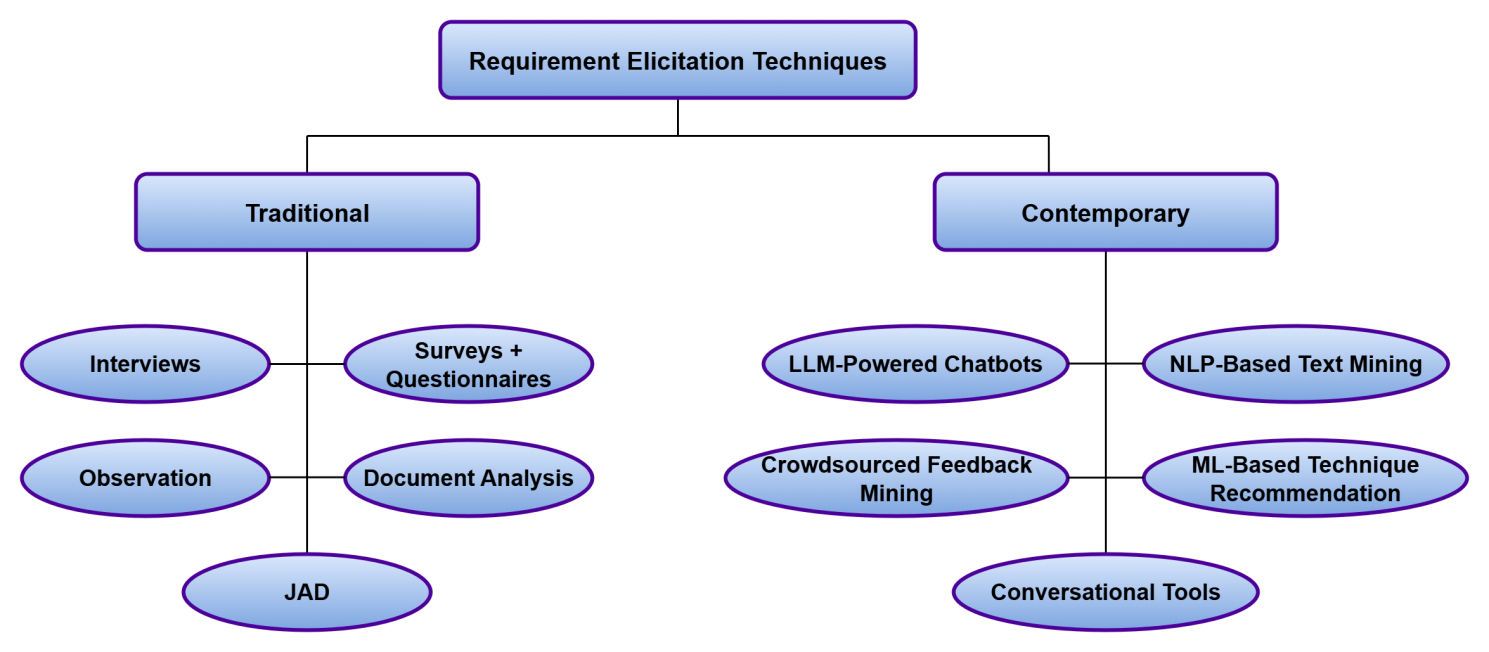Abstract
Requirements elicitation is one of the most important steps in the software development process. It involves understanding what users and stakeholders need from a system before it is built. Traditionally, this has been done using methods like interviews, questionnaires, document reviews, and direct observation. These approaches work well in structured environments but often fall short when dealing with large, fast-changing, or agile projects. In recent years, software development has shifted toward more flexible and fast-paced practices. This change has also affected how requirements are gathered. New techniques now include collaborative tools, user feedback from online platforms, and the use of artificial intelligence (AI) and natural language processing (NLP) to extract requirements from text automatically. This paper presents a comparative narrative review based on recent literature and practical insights. It presents both traditional and modern requirements elicitation methods, comparing them in terms of how they work, where they are most useful, and what challenges they present. A detailed comparison highlights key differences such as level of user interaction, tool support, scalability, and suitability for ongoing development cycles. By reviewing recent research and real-world practices, this paper identifies current trends, challenges, and open areas for future work. The goal is to help researchers, software engineers, and project teams choose the most suitable elicitation methods based on their specific project needs. In the end, this review supports the idea that a flexible, hybrid approach-blending old and new techniques-may be the most effective way forward in today's evolving software engineering landscape.
Data Availability Statement
Data will be made available on request.
Funding
This work was supported without any funding.
Conflicts of Interest
The authors declare no conflicts of interest.
Ethical Approval and Consent to Participate
Not applicable.
Cite This Article
APA Style
Akhtar, A., & Akhtar, S. (2025). Requirements Elicitation in Transition: A Review of Conventional and Contemporary Approaches. ICCK Journal of Software Engineering, 1(1), 32–45. https://doi.org/10.62762/JSE.2025.862549
Publisher's Note
ICCK stays neutral with regard to jurisdictional claims in published maps and institutional affiliations.
Rights and Permissions

Copyright © 2025 by the Author(s). Published by Institute of Central Computation and Knowledge. This article is an open access article distributed under the terms and conditions of the Creative Commons Attribution (CC BY) license (
https://creativecommons.org/licenses/by/4.0/), which permits use, sharing, adaptation, distribution and reproduction in any medium or format, as long as you give appropriate credit to the original author(s) and the source, provide a link to the Creative Commons licence, and indicate if changes were made.


 Submit Manuscript
Edit a Special Issue
Submit Manuscript
Edit a Special Issue

 Copyright © 2025 by the Author(s). Published by Institute of Central Computation and Knowledge. This article is an open access article distributed under the terms and conditions of the Creative Commons Attribution (CC BY) license (https://creativecommons.org/licenses/by/4.0/), which permits use, sharing, adaptation, distribution and reproduction in any medium or format, as long as you give appropriate credit to the original author(s) and the source, provide a link to the Creative Commons licence, and indicate if changes were made.
Copyright © 2025 by the Author(s). Published by Institute of Central Computation and Knowledge. This article is an open access article distributed under the terms and conditions of the Creative Commons Attribution (CC BY) license (https://creativecommons.org/licenses/by/4.0/), which permits use, sharing, adaptation, distribution and reproduction in any medium or format, as long as you give appropriate credit to the original author(s) and the source, provide a link to the Creative Commons licence, and indicate if changes were made. 